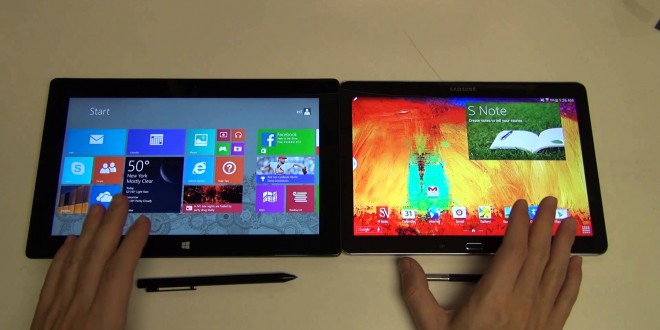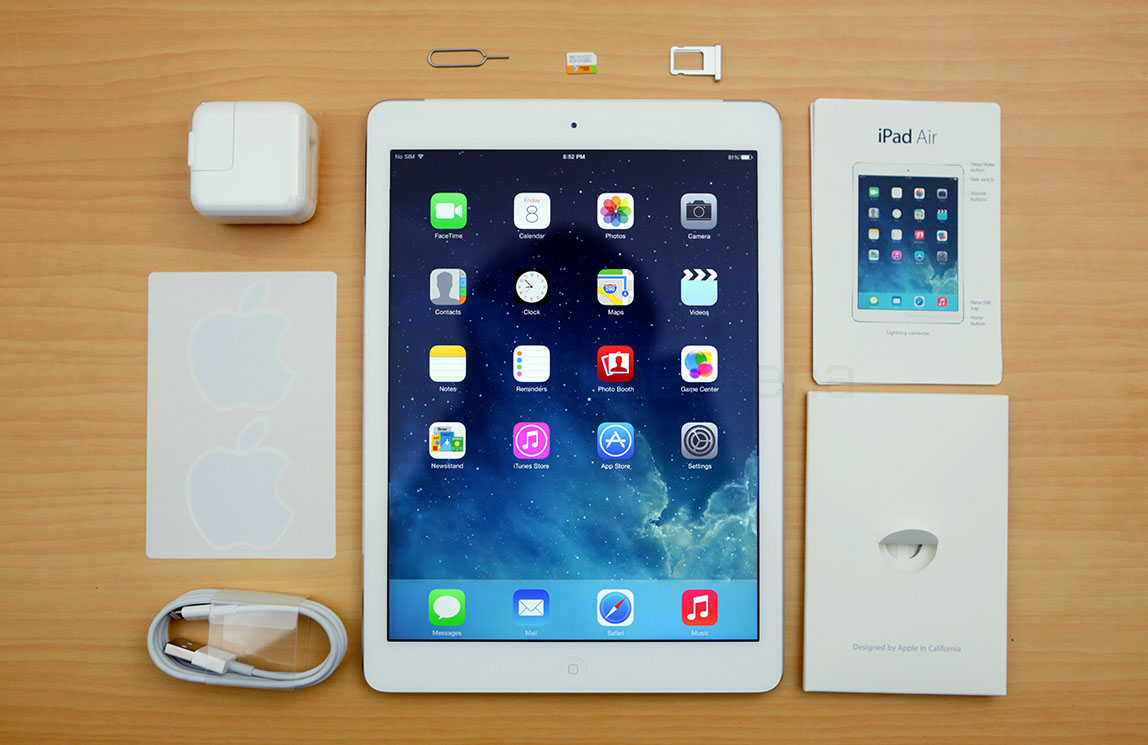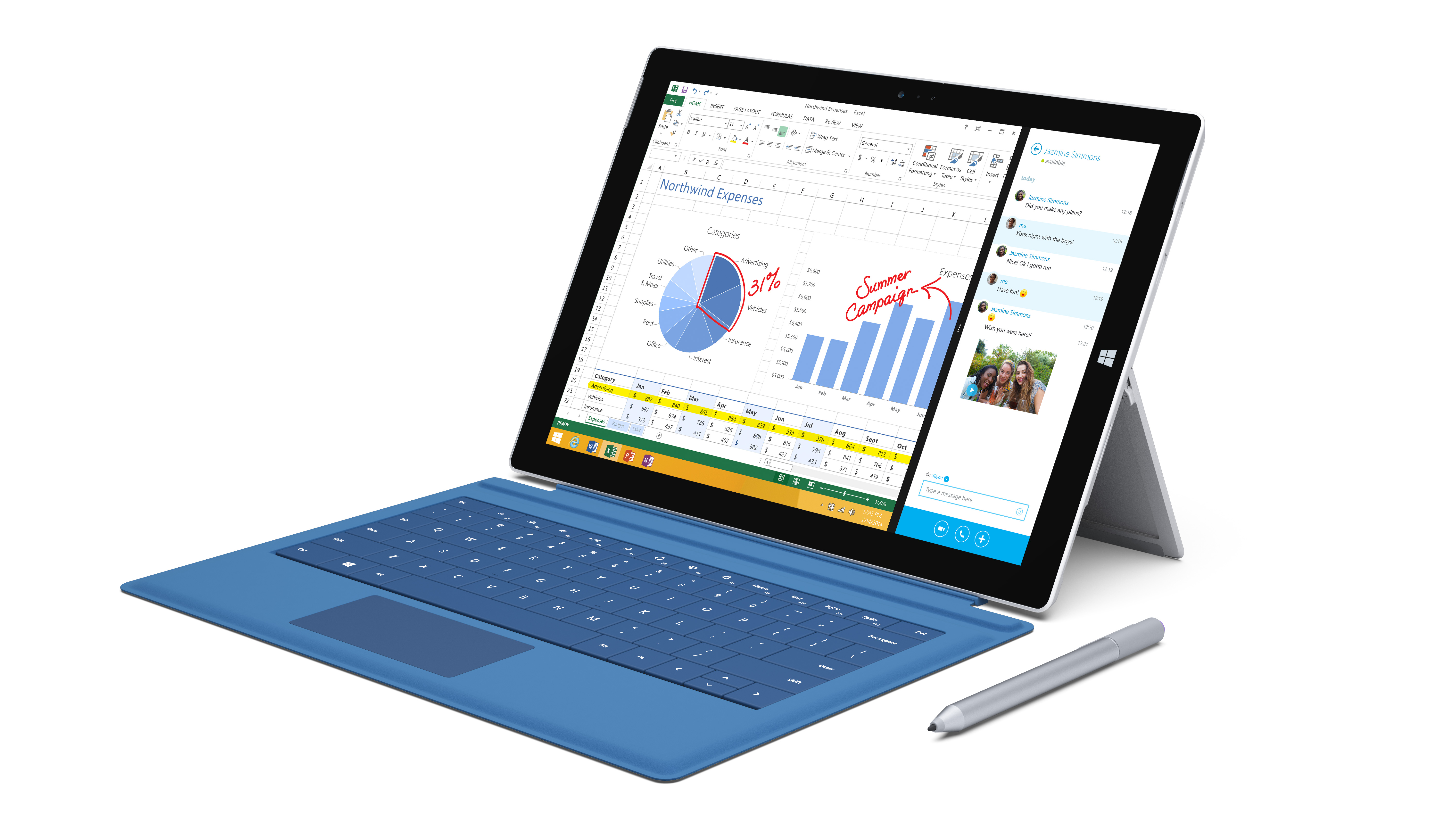Tablets have moved to the background of our news reports lately, mostly because we’ve been focusing on the latest flagship smartphones that have been launched this year. The time has come, though, to discuss a bit about which of the two most popular tablets should one get: the iPad Air or the Surface Pro 3. Of course, these are not your only options, but these are the ones that will first pop up during your search for the perfect device, so you deserve to know what sets these two tablets apart and which would fit your needs best, before moving on to other options.
The Apple iPad Air has been called many names this past year, including the best tablet you can find out there. That is, until the Surface Pro 3 came out from Microsoft. Up until the launch of the Surface Pro 3, the iPad Air had little competition when it came to performance, although Asus and Lenovo are not to be discarded as contenders. Nonetheless, let us fill you in about what made the iPad Air the most desirable device for a time.
First off, the iPad Air’s design came as an innovative appearance crafted with premium materials. The body is composed of aluminium, which offers it the durability most tablet users seek. The body houses a 9.7-inch 2048×1536 pixel color display at 264 pixels per inch. Its aspect ratio is 4:3 and it weighs just under half a kilogram. The iPad Air can be proud of its thin design and thin bezels, advertising the lightness of the body itself.
Spec-wise, the iPad Air can boast with a dual-core 1.3 GHz Cyclone CPU based on an ARM v8 chipset run by an Apple A7 CPU. It features 1 GB RAM, 5 MP rear camera and 2 MP front camera, no microSD card slot and scratch-resistant display with an oleophobic coating as we’ve seen in other Apple devices. The iPad Air has Bluetooth connectivity, 4G, Lightning connector and 3.5 mm audio jack. 4G is a very neat feature to see in the iPad Air and that’s its best selling point as well, besides the fact that it’s so light.
The tablet does have pretty good specs configured to cater to power users that need more portability and lasting battery life, but the Surface Pro 3 might be a little better in this area.
The Surface Pro 3 is made up of a magnesium body and weighs about 800 grams, heavier than the iPad Air. It features a 12 inch display with 2160 x 1440 pixel ClearType resolution and 3:2 aspect ratio. Clearly, the Surface Pro 3 is quite larger than the iPad Air, making it a more desirable choice for most power users that still cling to laptops. A larger display does lower maneuverability, but the Surface Pro makes up for that with the excellent specs it features. The Surface Pro 3 is also thicker and larger than the iPad Air, which scores some points for the iPad since that’s much easier to handle.
You can get the Surface Pro 3 in different variants: in 64, 128, 256, 512GB configurations and i3, i5 and i7 processor variants, while the iPad Air can only be bought in 16, 32, 64, and 128GB configurations with just 1 GB RAM. The fact that you can get the Surface Pro 3 with 512 GB internal storage and a microSD card slot is quite the pull-factor when it comes to power users. The Surface Pro 3 tablet has the users with the need of portability and versatility in mind, attracting a larger audience than the iPad Air. The Surface Pro 3 is available with 4GB of RAM in the 64 and 128GB storage configurations and 8GB of RAM in the 256 and 512GB storage configurations, which is even better than some laptops out there.
The Surface Pro 3 includes Bluetooth, USB 3.0 port, dedicated power charger, ccoupling connector to attach an optional Type Cover/Keyboard combo, MiniDisplay port, microSD slot and 3.5 mm audio jack. What is missing when it comes to the tablet’s connectivity, is 4G. It makes up for that with the Surface Pen stylus it comes with, though. It also has 2 5 MP cameras on the front and the rear, making it the best in camera option.
So far, the Surface Pro 3 seems the better option for anyone seeking a powerful mobile device, trumping the iPad Air and many other tablets out there. But, once again, as in many other Microsoft vs. Apple comparisons, it comes down to the O.S. The Surface Pro 3 runs Windows 8.1 while the iPad Air runs the iOS 7, which will be upgradable to iOS 8. This is the field which most focus on when trying to decide between mobile technology manufacturers and suppliers. Personally, I’m more fond of Windows than iOS, because that’s what I’ve been always using, but with Windows 8.1, there is an issue with app availability and diversity on the Surface Pro 3. Whilst iOS provides a huge app store with many things to choose from, the Windows 8.1 app suite is a bit more restrictive.
Nonetheless, the Surface Pro 3 is configured to desktop capabilities, so it’s basically like using your laptop running Windows, which is kind of awesome, especially if you use the tablet for office purposes. The iPad Air on the other hand, is the best tablet you can get at the moment, since the Surface Pro 3 is a laptop-tablet hybrid many don’t need. The Surface Pro 3 tablet is something you should buy if you’re in need of a new laptop. The iPad Air’s functions cater more to tablet users, whilst the Surface Pro 3 actually targets PC and laptop users and does it well with the portability it offers. It can actually replace your laptop, if we’re optimistic about it, but it does lack some of the fun the iPad Air offers.
The iPad Air currently retails for $700 tops, while the Surface Pro 3 is $1000 pre-ordered. That is a $300 difference between the two tablets, and both are actually well worth their price, if you think about it. The iPad Air is a durable, powerful and light device, maybe the best of its kind. The Surface Pro 3 is more like the first of its kind, or among the firsts anyway, because it materializes the concept of a touchscreen featuring ultra-portable laptop. Both tablets are a step forward in tablet technology and both would satisfy the needs of most power tablet users, so once again, the choice is yours to make. Do you need a tablet or do you need something to replace a laptop?
We shouldn’t forget about Apple’s upcoming iPad Pro, though, because it might just be the fairer competitor for the Surface Pro 3. We are curious what Apple is doing with the new iPad since the company is trying to focus this side of the market, bringing in the most revenue for them at the moment.
 Load the Game Video Games, Reviews, Game News, Game Reviews & Game Video Trailers
Load the Game Video Games, Reviews, Game News, Game Reviews & Game Video Trailers





